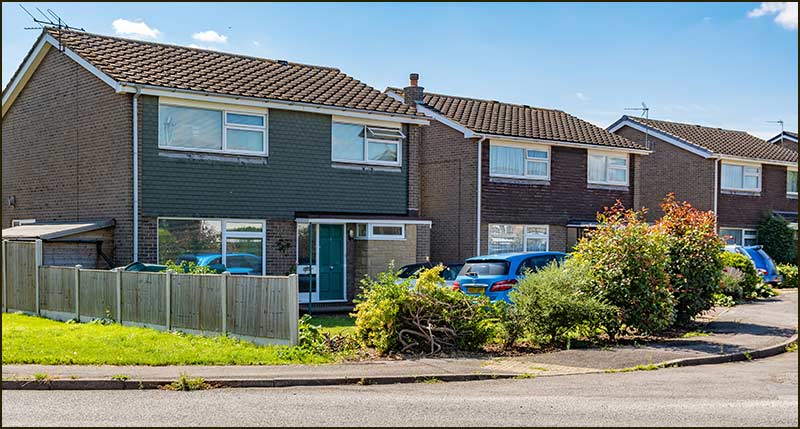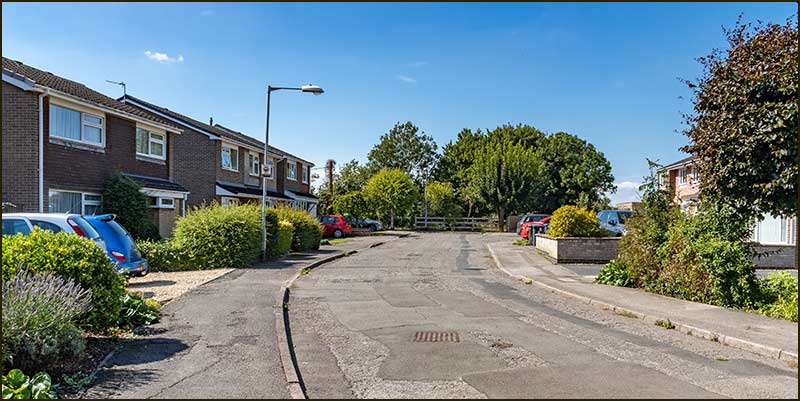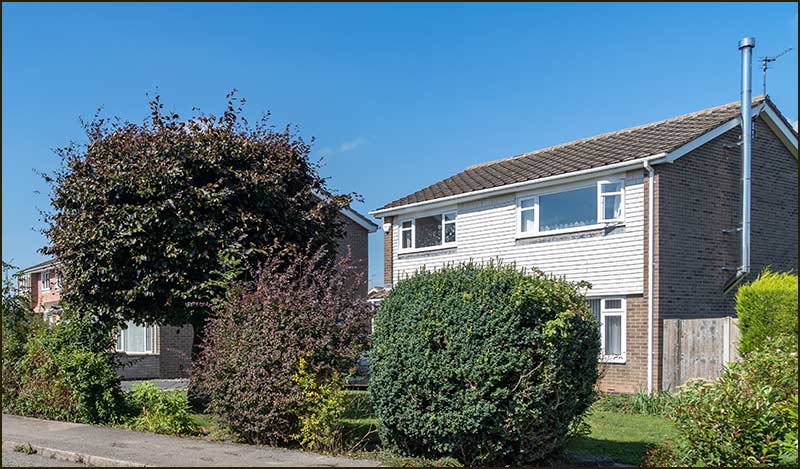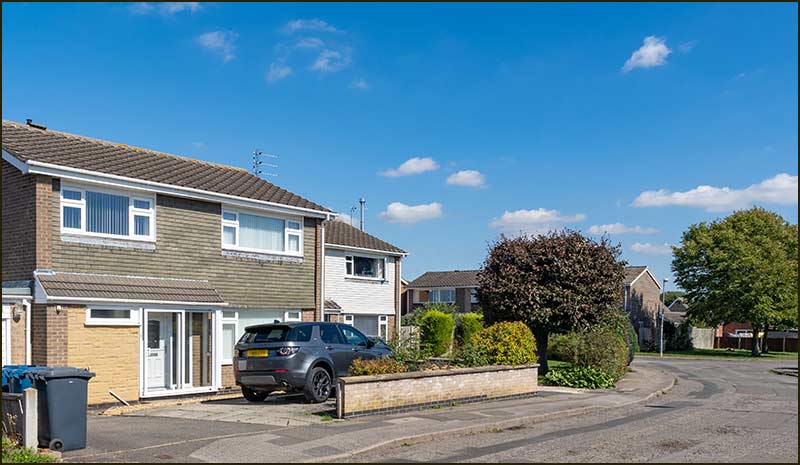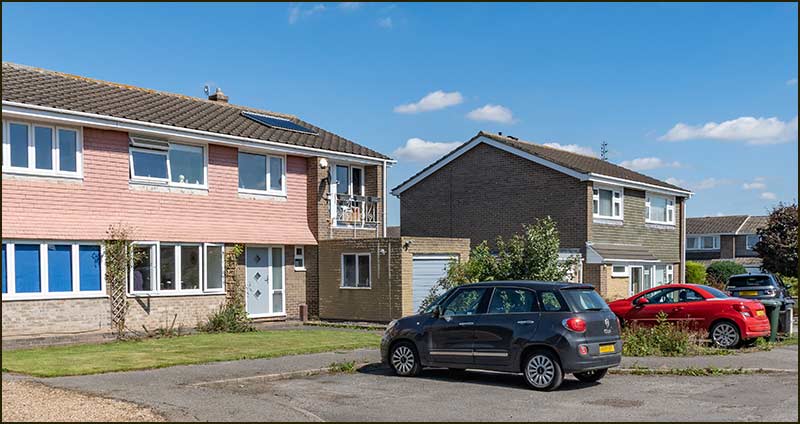Cropwell Bishop Streets: — Clarke Close (2-4-21)

Clarke Close was built in the early 1970s when the final extension of Hoe View Road was completed. Like all the other side-roads built at the time, Clarke Close was named after people associated with Cropwell Bishop.
Finding a character named Clarke, who made their mark in Cropwell Bishop, was not difficult. The problem was in picking the right one because dozens of Clarkes once lived here and several might deserve a street name.
So, the question became, which of these Clarkes did parish councillors have in mind when they named Clarke Close?

Who owned Clarke Close land?
When investigating the history of other village streets, I found it helpful to start with the map for the 1804 Enclosure Act. In the 1970s parish councillors often chose names from it.
Below, is the portion of the map in the region of Clarke Close. Nottingham Road sweeps from left to right and is first crossed by the Grantham Canal and then joined by Kinoulton Road.
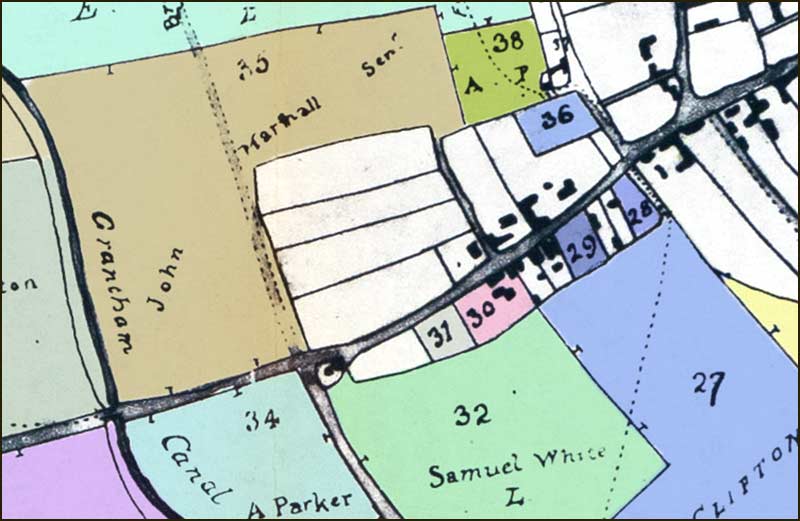
According to the map, the field which corresponds to the Memorial Hall field of today (coloured brown) was owned by John Marshall. Next to it are four horizontal fields in white: the second one up corresponds to Clarke Close.
This field has no name on it, which means it was not part of the Enclosure Act agreement. Consequently, it doesn’t name its owner. So, our parish councillors were denied their usual method for choosing a street name.
Maybe they found a more recent owner of this land had the name Clarke.
In 1930, there was an auction of land and properties in Cropwell Bishop that included this same field. One of the people who attended that auction was local farmer, Arthur Barlow.
Here are copies of the auction leaflet and a map that went with it. These were his personal copies and they show the pencilled notes he made at the auction.
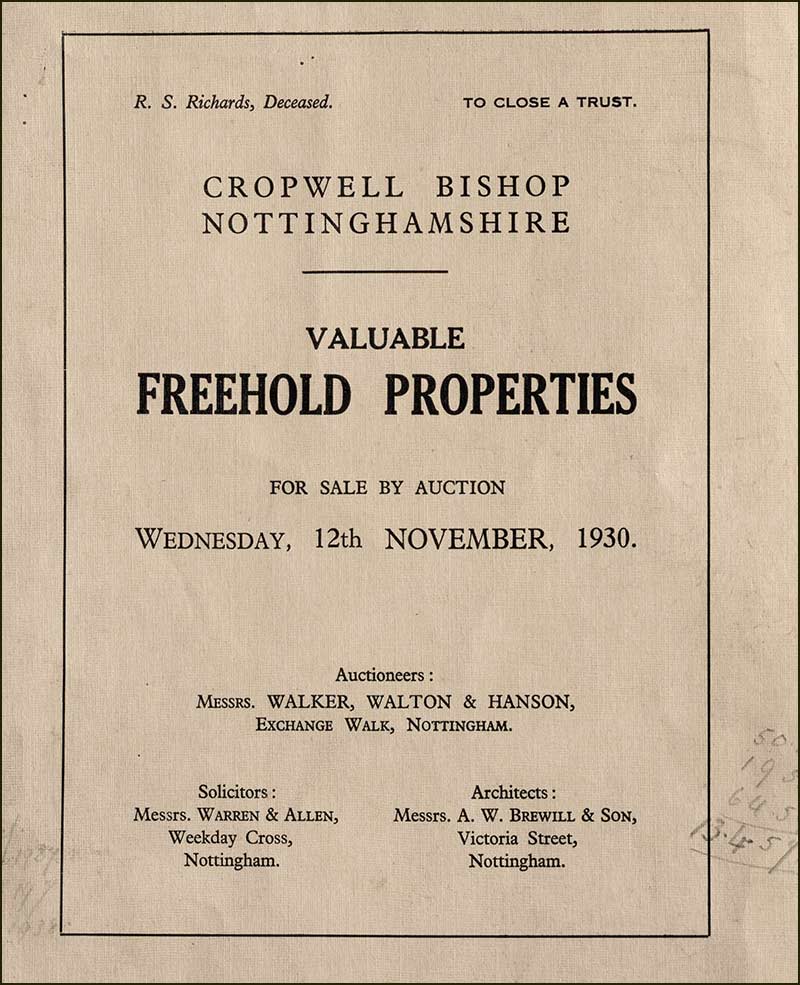

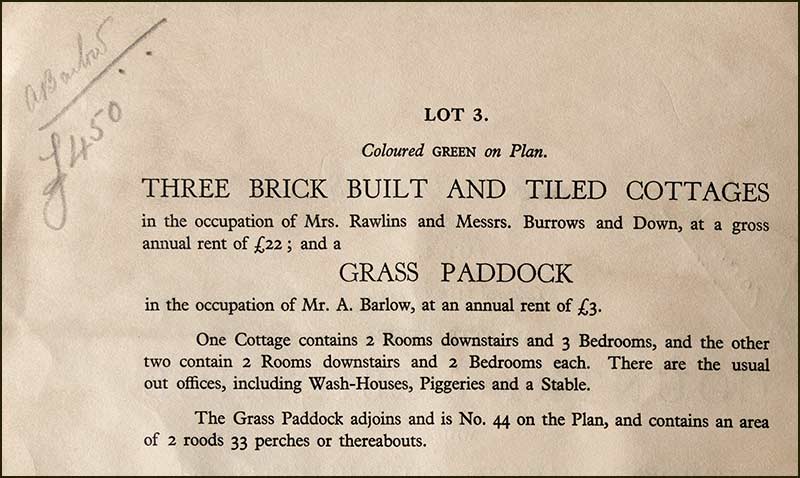
The booklet belonged to Arthur Barlow and his hand-written note on the left suggests that he bought this paddock for £450.
As we can see, field 44 was being sold as part of Lot 3. The note at the side suggests that it was indeed, Arthur Barlow who bought Lot 3 for £450.
However, its significance for us, is that it wasn’t a person named Clarke.
So, the evidence suggests that the street was not named after someone with a direct connection to the land on which is stands. There had to be a different reason for choosing the name Clarke.
Could this Clarke character have owned land elsewhere in Cropwell Bishop, I wondered.
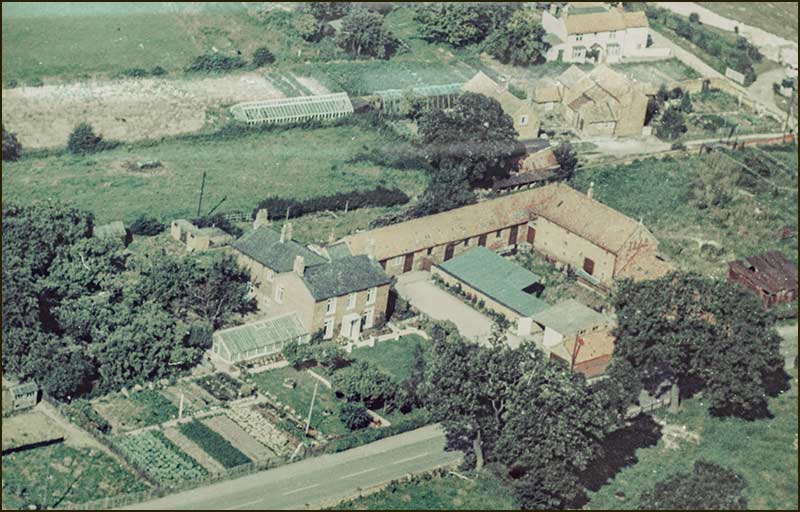

This field of cows is where Clarke Close now is.
On the left, behind the hedge, is the back garden of Lenton House.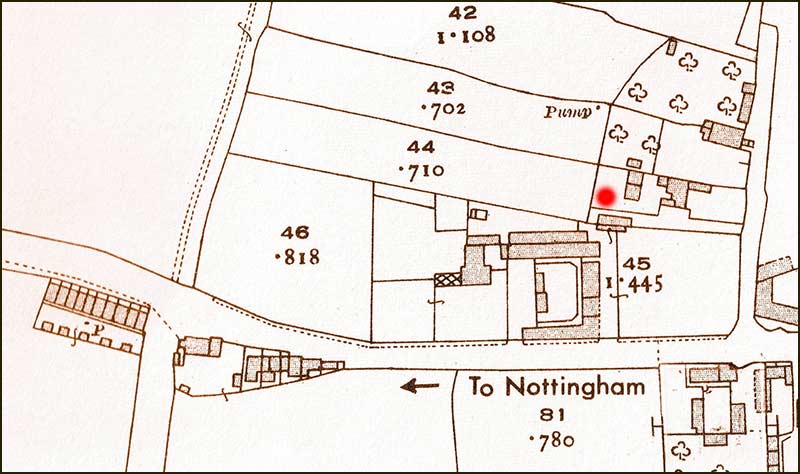
The red dot is where the photographer stood when he took his photo of the Memorial Hall.

The Clarke family
All I needed to do was investigate all the Clarke families who lived in Cropwell Bishop during the last 200 years. Sounded straight forward — until I discovered that Clarke families liked to have lots of children.
Just think about it, if a Mr and Mrs Clarke had 10 children in the early 1800s, and each of these children had 10 of their own, by 1850, that would result in 100 descendants. If this pattern repeated itself, then by 1900 there would be 1000 Clarke descendants.
Of course, this didn’t happen in practice. Some parents did not have that many children, some children did not survive infancy, and all girls would lose the Clarke name in marriage. Nevertheless, it did leave a lot of Clarkes to consider.
I decided to concentrate on the most promising branches of the family.
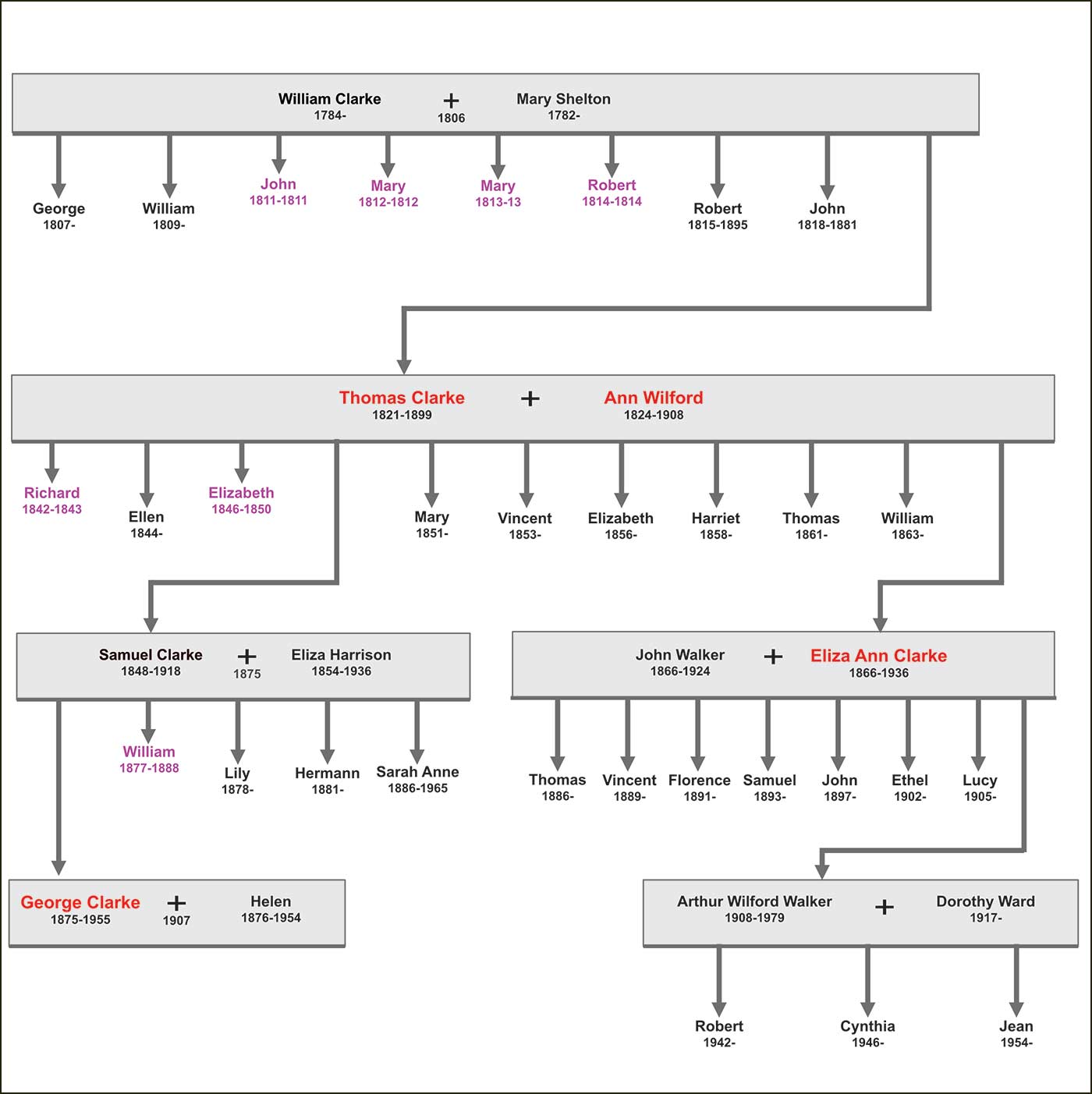
Back in 1806, William Clarke of Hickling, married Mary Shelton of Cropwell Bishop and they went on to live their life here, having 9 children along the way. The most interesting child in our search is the youngest one, Thomas Clarke.
Thomas was born in Cropwell Bishop in 1821 and married Ann Wilford of Cropwell Bishop. They had 11 children. Their fourth, Samuel, was born in 1848. He was an agricultural labourer and when he was 27 years old, he married Eliza Harrison of Cropwell Bishop.
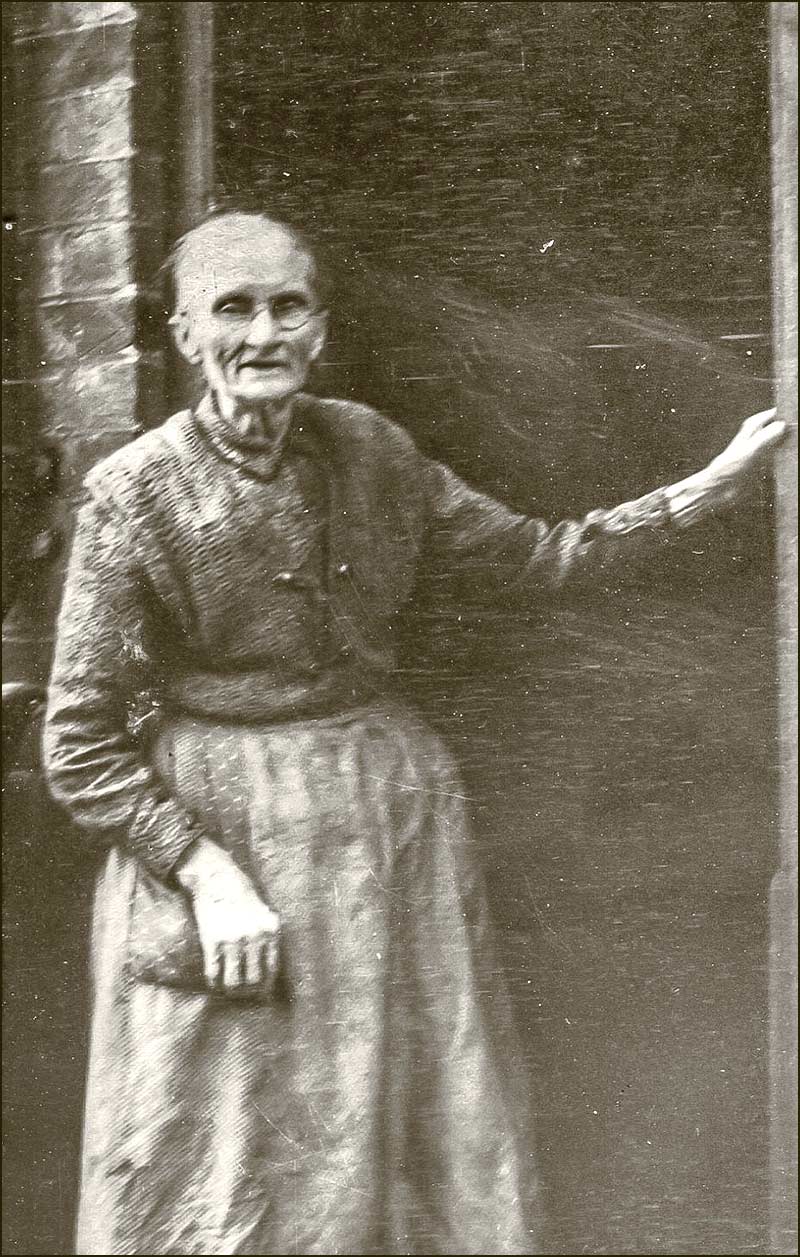
They had 5 children and their eldest was George — and he would prove an interesting person in our search for a ‘significant’ Clarke.
George did not achieve “his significance” until late in his working life when he became a farmer. He was not a rich landowner but he did run a small dairy-farm, called Stockwell Farm, on Church Street.
We came across George Clarke in the Church Street Story that described the milking parlour that he had near the corner of The Maltings.
Since George was both a farmer and a landowner, whose land was later used for house building, he appeared qualified for having a street named after him.
However, when the land he left behind (he died in 1955) was built on in the 1960s, it was not named Clarke Close but The Maltings. The name derived from the malt houses that George had owned.
When parish councillors had the task of naming more new streets in the 1970s, they may have decided to make amends for not naming that street after George Clarke, by choosing to name Clarke Close after him.
On the other hand, maybe they had in mind a very different Clarke character: George’s own grandfather, Thomas Clarke.

The Post Office Clarkes
In the decades that Thomas and his wife, Ann, were raising their large family during the mid 1800s, Thomas worked as a “plaster-getter”. But in the 1880s, when they were in their 60s, a new opportunity came their way — one that may have earned them the honour to have a street named after them.
Up until the mid 1880s, the village post office was in a cottage on Church Street and run by Ann Shelton. When, at about this time, Ann died, the post office was taken over by a newcomer to the village, a Mr Porter. However, he quickly found the task too demanding for him.
It is said that it was the vicar, Reverend Dobbin, who recommended that Thomas Clarke and Ann take over the post office.
Thomas and Ann accepted the challenge, and adapted their house at The Turn, 1 Nottingham Road, to make it a post office and small shop.
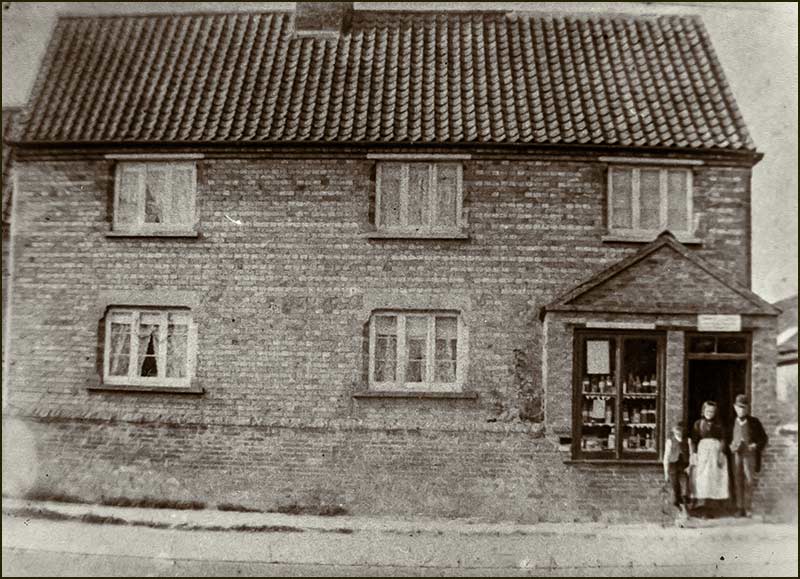
About 10 years later, Thomas died, but Ann Clarke continued as post-mistress until her own death in 1908. She was helped by her youngest daughter, Eliza, who lived at the house together with her husband, John Walker, and their growing family. John was foreman at the gypsum mine.

John died when he was just 59 years old, but Eliza carried on her job as post-mistress. Her youngest son, Wilf, helped her in the shop and became the village postman when he was 16 years old. When he was 22, he took over as sub-postmaster which enabled his mother to retire.
Wilf continued in his post for 43 years until retiring in 1973. His son, Robert, helped him.
It was then that the post office moved into the newly built general store and newsagent on Church Street (now demolished).
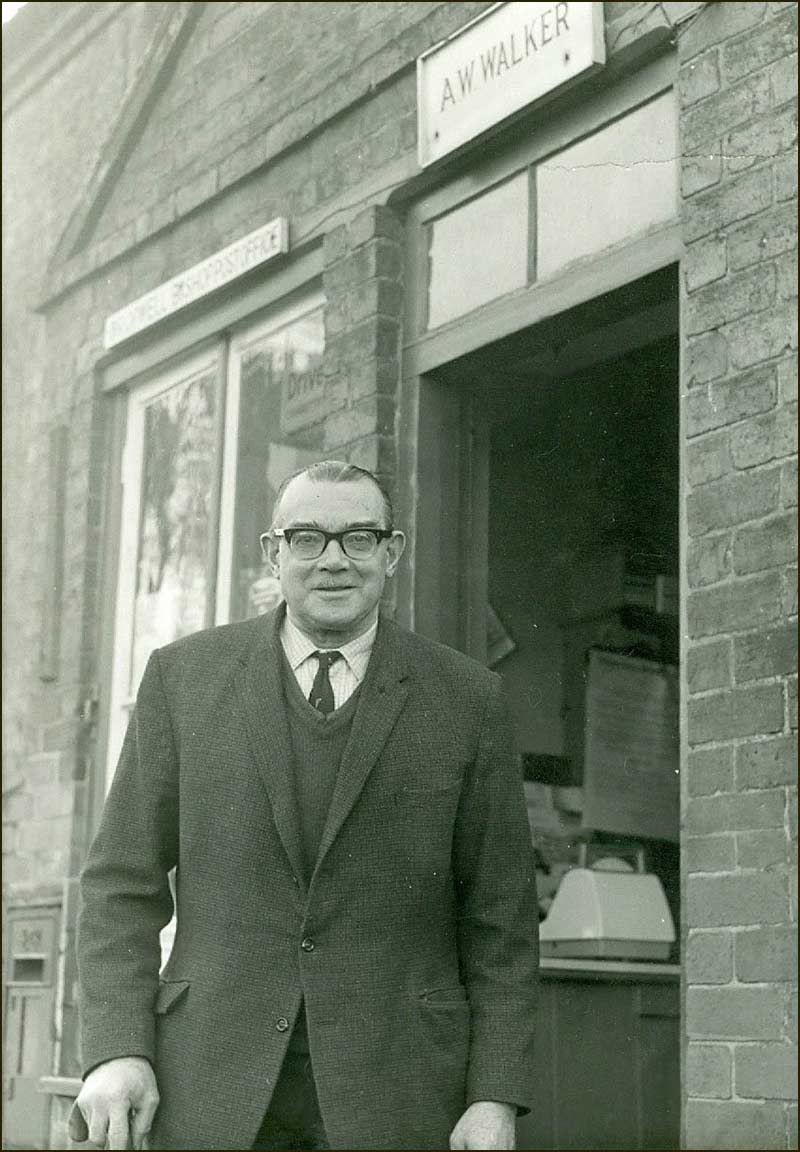
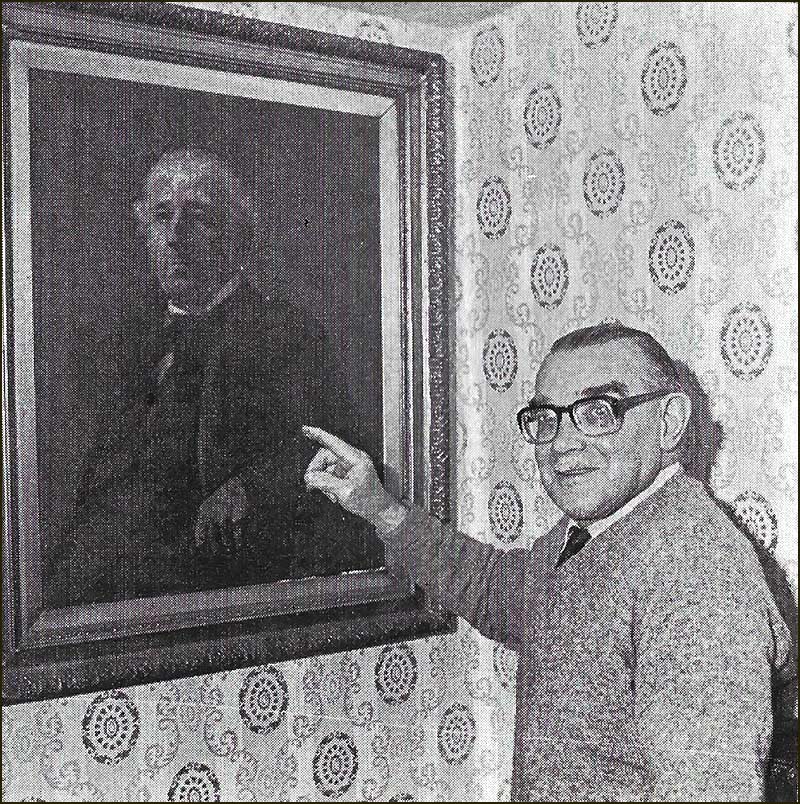


Which Clarke was it?
So, where does this leave us in our search for the “Clarke” of Clarke Close: do we have an answer? Let’s look at the options.
Local farmer, George Clarke, who was denied the honour when The Maltings was given its name, appears to have been deserving – as was his grandfather, Thomas Clarke, who stepped forward to provide a village post office when he might have dreamed of having an easy retirement.
Then there was his wife, Ann Clarke, who did most of the work in the post office – and kept it going when her husband died.
Also, Ann’s daughter, Eliza Clarke, who took over the post office after her mother — wasn’t she just as deserving as the other three?
Which one would you pick? I don’t have the confidence to pick one ahead of the others.
Of course, it isn’t for us to choose; that was the parish councillors’ job and I doubt we will ever find out for sure who they had in mind. Anyway, does it really matter?
The Clarke family certainly seeded a large number of later generations in Cropwell Bishop and it seems reasonable to have a street name to remind us of that.
Tony Jarrow
Note:
Thanks to Anne Terzza, Pam Barlow and Ricky Snodgrass for their help with this article.
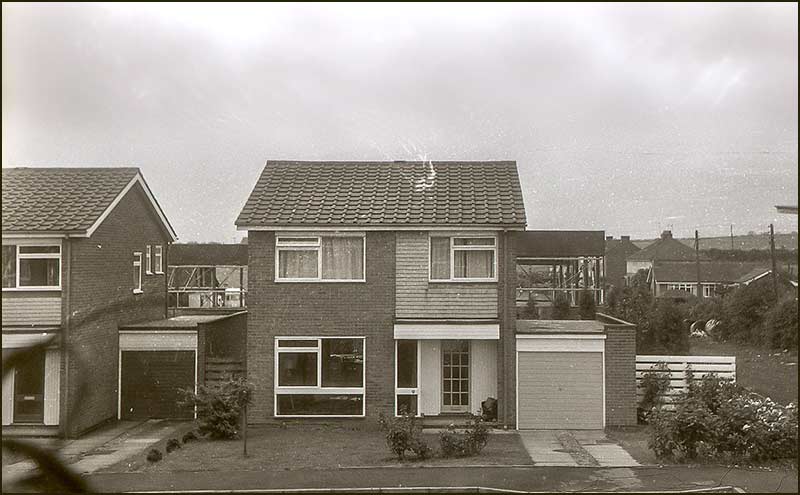
Behind it, you can see the garage on Nottingham Road being rebuilt.
.jpg)

Clarke Close in 2020

